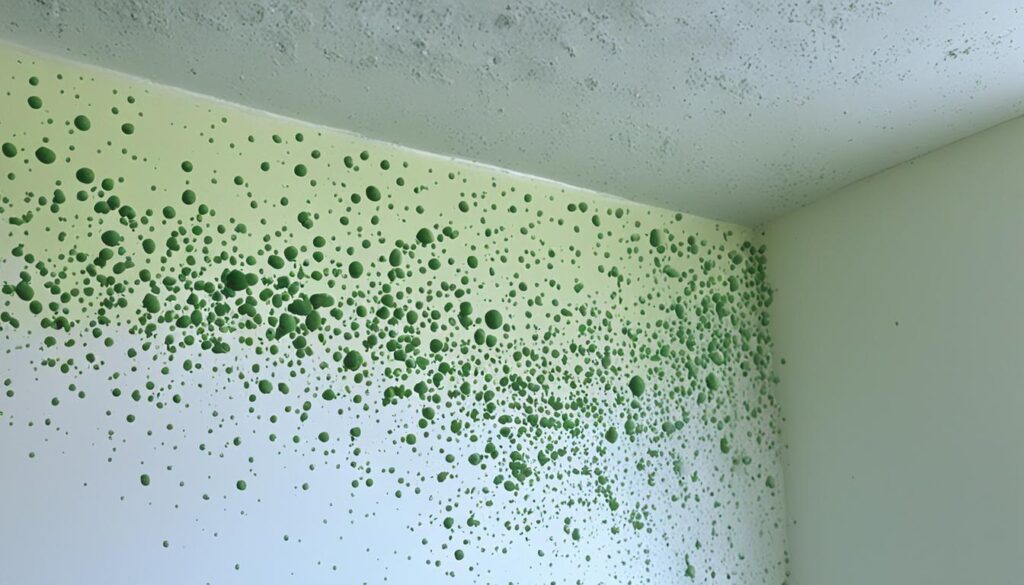
Understanding Effects of Mold Exposure Florida Residents
Mold exposure is a significant concern for residents in Florida due to the state’s humid climate. The warm and damp conditions create an environment conducive to mold growth, which can pose various health risks to individuals.
Mold is a type of fungus that thrives in moist environments and reproduces by releasing spores into the air. When these spores are inhaled or come into contact with the skin, they can cause a range of health issues, particularly for individuals with pre-existing respiratory conditions or weakened immune systems.
Common symptoms of mold exposure include nasal congestion, coughing, wheezing, and eye irritation. Prolonged exposure to mold may lead to more severe health complications like asthma attacks, allergic reactions, and respiratory infections.
Key Takeaways:
- Florida’s humid climate creates favorable conditions for mold growth.
- Mold exposure can cause respiratory issues, allergies, and skin irritation.
- Individuals with pre-existing health conditions are at higher risk of severe health complications.
- Preventing mold growth and seeking professional remediation services are crucial steps for Florida residents.
- Regular inspections, maintaining optimal humidity levels, and proper ventilation can help minimize the risk of mold exposure.
Health Risks Associated with Mold Exposure in Florida
When it comes to mold exposure, Florida residents need to be aware of the potential health risks involved. Mold growth in indoor environments, especially in humid climates like Florida’s, can lead to a range of health effects that can affect individuals in different ways.
Mold exposure can cause a variety of symptoms, ranging from mild to severe. Common respiratory issues such as coughing, wheezing, and shortness of breath are often experienced by individuals exposed to mold. Allergies are another common outcome, with symptoms like sneezing, nasal congestion, and itchy eyes becoming a daily struggle for some.
Moreover, mold exposure can result in skin irritation, leading to rashes, redness, or itchiness. For individuals with pre-existing respiratory conditions like asthma, exposure to mold can exacerbate their symptoms, making breathing difficulties even worse.
Prolonged exposure to mold can result in more severe health complications. Individuals with weakened immune systems, such as the elderly, infants, or those undergoing chemotherapy, are particularly vulnerable and may experience severe respiratory infections or other systemic health issues.
“Mold exposure in indoor environments, especially in humid climates like Florida’s, can lead to a range of health problems. It is crucial for residents to understand the risks and take necessary precautions to prevent mold growth and exposure.” – Dr. Rebecca Wilson, Medical Director at Florida Health Center
Mold exposure health risks can vary depending on the type of mold present, the level of exposure, and individual susceptibility. Therefore, it is essential for Florida residents to be proactive in identifying and addressing mold issues in their homes or workplaces.
By implementing proper mold prevention measures and seeking professional assistance for mold remediation when necessary, individuals can minimize the potential risks to their health.
Common Health Effects of Mold Exposure in Florida
| Health Effects | Symptoms |
|---|---|
| Respiratory Issues | Coughing, wheezing, shortness of breath |
| Allergies | Sneezing, nasal congestion, itchy eyes |
| Skin Irritation | Rashes, redness, itchiness |
| Exacerbation of Asthma | Increased breathing difficulties |
| Severe Infections | Respiratory infections for individuals with weakened immune systems |

Environmental Factors Contributing to Mold Growth in Florida
Florida’s humid climate and specific environmental conditions create favorable environments for mold growth. Understanding the factors that contribute to mold growth is essential for Florida residents in order to mitigate the risks associated with mold exposure.
One of the primary factors that promote mold growth in Florida is the consistently high humidity levels. The state’s tropical climate, with its warm temperatures and abundant rainfall, creates the ideal conditions for mold to thrive. Mold spores, which are present everywhere in the environment, can easily find the moisture they need to grow and reproduce in the consistently moist air.
In addition to high humidity, inadequate ventilation in buildings further exacerbates mold growth in Florida. Poorly ventilated areas, such as bathrooms and basements, trap moisture and create stagnant air, providing an ideal breeding ground for mold. Without proper airflow, moisture accumulates and cannot effectively dissipate, leading to increased mold growth.
“The combination of Florida’s humid climate and inadequate ventilation can create a perfect storm for mold growth. It is essential for residents to take proactive measures to prevent and address mold issues in their homes.” – Dr. Sarah Thompson, Environmental Health Specialist
It’s important to note that Florida’s susceptibility to hurricanes and heavy rainfalls also contributes to increased mold growth. Water damage caused by flooding or leaks from these weather events can create damp conditions that accelerate mold growth. If not promptly and properly addressed, water damage can lead to long-lasting mold problems.

By understanding these mold growth factors, Florida residents can take appropriate measures to prevent mold infestations and protect their health. The next section will explore strategies for mold prevention and remediation in Florida, empowering residents to maintain safe and mold-free living environments.
Mold Prevention and Remediation in Florida
Living in humid climates like Florida can increase the risk of mold growth in homes. However, residents can take proactive steps to prevent and remediate mold issues, ensuring a healthier living environment for themselves and their families.
The first key aspect of mold prevention is maintaining optimal humidity levels. This can be achieved by using dehumidifiers, running air conditioners, and utilizing exhaust fans in high-moisture areas like bathrooms and kitchens. By keeping humidity levels below 50%, it becomes harder for mold to thrive and spread.
Proper ventilation is another crucial factor in mold prevention. Allowing fresh air to circulate throughout the house helps reduce moisture buildup and keeps the indoor environment drier. Regularly opening windows, using fans, and ensuring that clothes dryers and kitchen hood vents are properly vented to the outside can greatly aid in preventing mold growth.
In addition to preventive measures, it’s important to conduct regular inspections for any signs of mold. This could include checking for water leaks in pipes, roofs, or appliances, as these can create ideal conditions for mold to develop. If mold is detected, it’s highly recommended to seek professional assistance for mold remediation.




